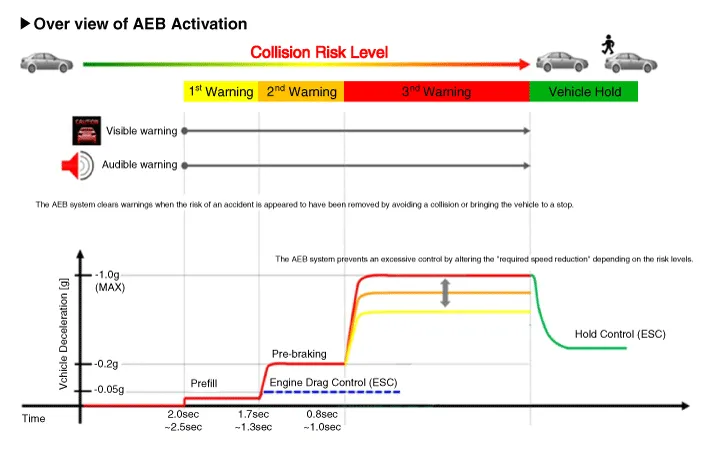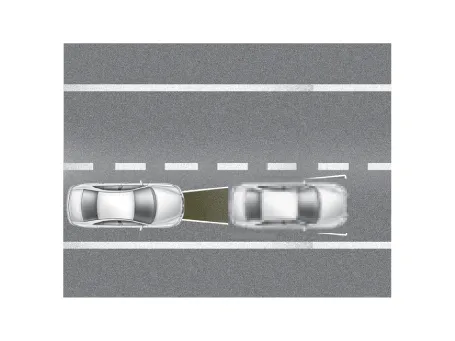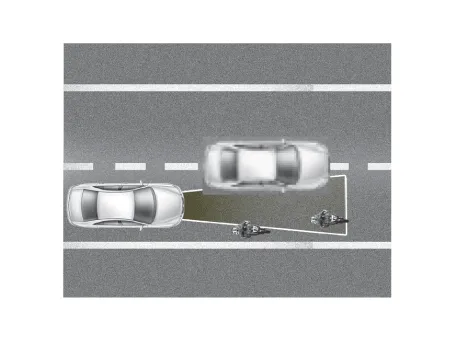Hyundai Ioniq (AE): Autonomous Emergency Braking(AEB) System / Description and operation
| –
| AEB system is designed to help avoid a potential collision or reduce its impact when drivers applies inadequate, delayed or no brakes at all to avoid a collision. |
| –
| The system detects the risk factors on the road by using the frontal impact sensor and warn the driver and activate the emergency brake to prevent collision or reduce collision speed. |
The following is the system control process
| 1. | Detect preceding vehicles (pedestrians) and analyze the data (CAN comm.) by using the radar sensor of the Smart Cruise Control System (SCC) and the camera sensor of Lane Departure Warning System (LDWS). |
| 2. | Confirm the object to be protected by AEB system (vehicles and pedestrians) by using the analyzed data. |
| 3. | Calculate the speed reduction depending on the speed, distance, existence or nonexistence of preceding vehicle. |
| 4. | Report the "required speed reduction" to Vehicle Dynamics Control (VDC) (CAN Comm.) |
| 5. | VDC performs automatic control after calculating the required torque to achieve "required speed reduction" (CAN Comm.). |

※ The time indicated will be changed according to vehicle speeds.
| •
| Step 1 : Issue a visual (display) and vocal alarm when a danger is detected. |
| •
| Step 2 : Reduce engine torque and activates AEB when there is a high chance of collision. |
| •
| Step 3 : Activate emergency brake when a collision is imminent. |
| •
| After stopping the vehicle : Maintain the braking control for a certain time and then release it. |
| •
| Braking power is adjusted depending on the risk levels of collision, but it is released immediately when it detects the driver's action to avoid a collision. |
| 1) | When it exceeded the maximum operation speed. |
| 2) | When it detected driver's action to avoid a collision such as sudden steering changes. |
| 3) | When the shift lever is in R or P |
| 4) | When you pressed the accelerator pedal half way. |
|
| 1) | When you drive at 80km/h or faster, the system does not go to step 3 of emergency braking. - Full auto braking is not available. |
| 2) | While driving at 80km/h or slower on a straight or slightly curved road, the system performs three steps after issuing a warning. - But a collision may occur at 30km/h or faster depending on the road conditions. |
| 3) | While driving at 80km/h or slower on a straight or slightly curved road, after a visual and vocal warning, AEB is activated to reduce the vehicle speed. |
| 4) | At 80km/h or faster, it's impossible to avoid a collision. Offset should be less than 50%. |
| 5) | AEB does not work on the vehicles backing up or resisting. |
| 6) | At 70km/h or faster, it does not respond to pedestrians. |
|
Offset : Rate of non-overlapping on the line between the front driving car and my car | 1) | Offset 0% : 
|
| 2) | Offset 100% : 
|
|
ComponentsThe following is the configuration of the AEB system.–
Detection device (radar and camera) that can recognize potential obstacles in the front.
Other information:
C
Removal1.Disconnect the negative (-) battery terminal.2.Remove the tailgate lid trim.(Refer to Body - "TailGate Lid Trim")3.Disconnect the Rear view camera connector (A).4.Remove the Rear view camera assembly after loosening the mounting screws.Installation1.





